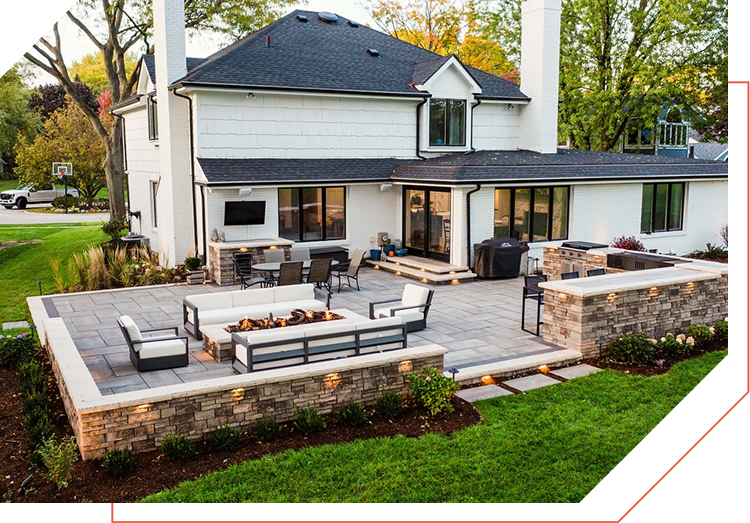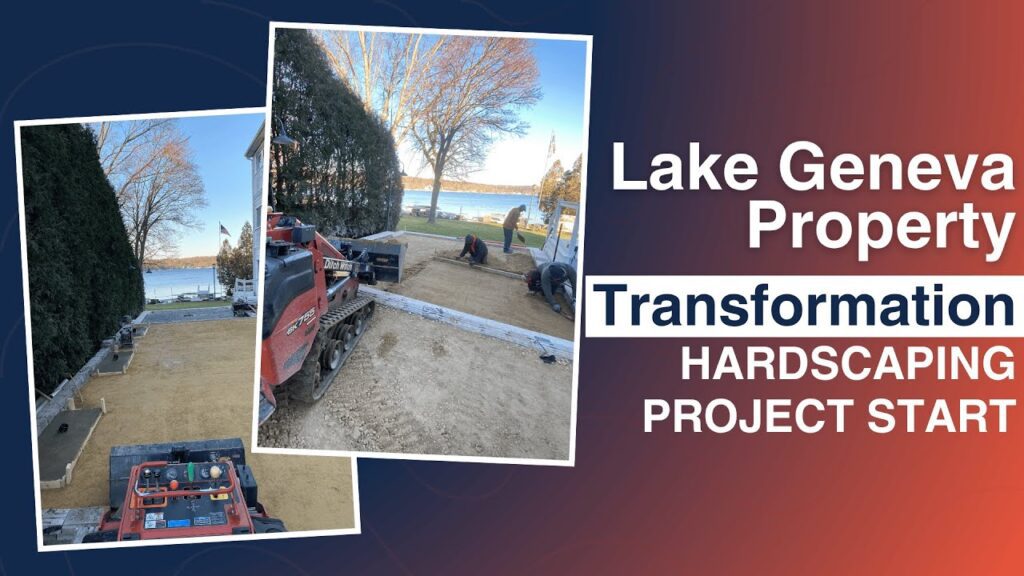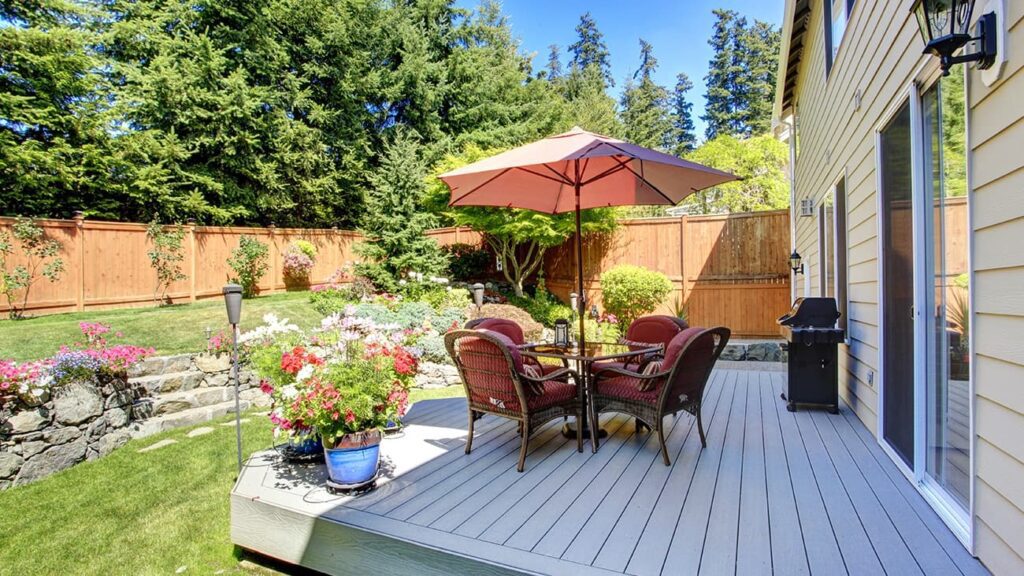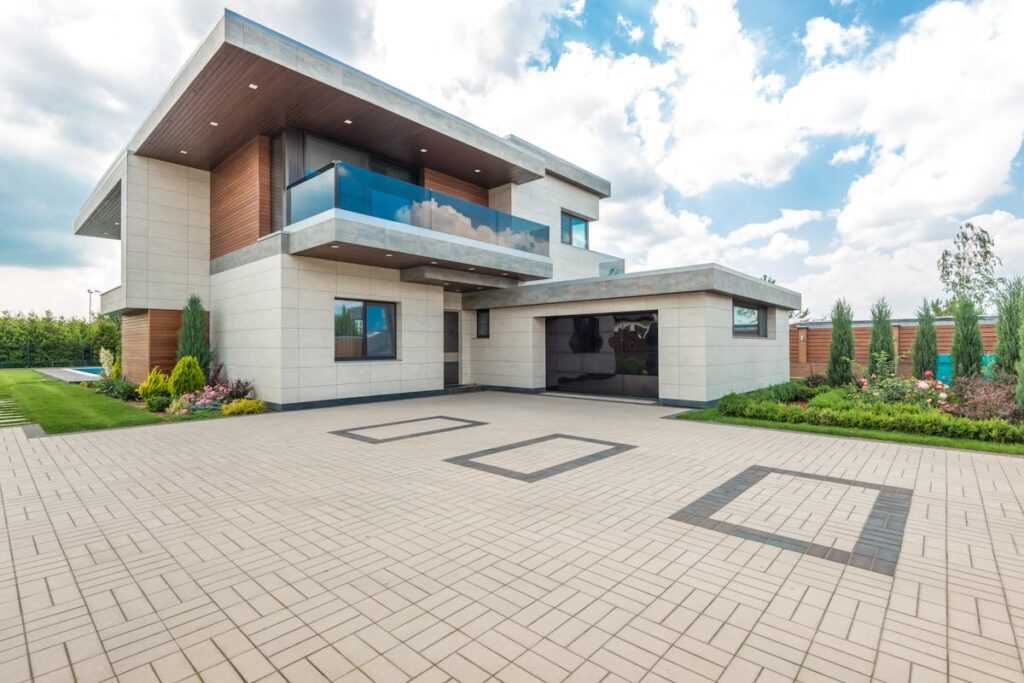Designing patios and walkways is one of the most effective ways to transform your outdoor living area into a functional, stylish, and inviting space. Whether you’re looking to create a serene garden path, a vibrant entertaining area, or a seamless flow between different parts of your yard, the right combination of materials, layout, and features can bring your vision to life. In this guide, we’ll explore various design options, material choices, and strategies for integrating patios and walkways into a cohesive outdoor space.
Understanding the Role of Walkways and Patios
Walkways and patios serve different but complementary purposes. Walkways are pathways that guide you from one area to another—think of a gravel path leading from the driveway to the front porch or a stepping-stone path winding through a garden. Patios, on the other hand, are larger flat spaces designed for relaxing, dining, and entertaining. Together, they create flow and structure in your landscape.
Choosing the right design involves considering your home’s architecture, climate, and how you plan to use the space. A modern home may pair well with sleek paver designs, while a rustic property might shine with natural stone and irregular shapes.
Walkway Design Ideas
1. Gravel Paths
Gravel is affordable, easy to install, and offers excellent drainage. Available in a variety of colors and sizes—such as pea gravel, crushed granite, or lava rock—it’s a versatile choice that works well for informal gardens or secondary paths.
2. Stepping Stones
Stepping stones provide a charming, natural look, especially when surrounded by grass or low-growing plants. They can be made from natural stone, concrete, or even wood for a rustic effect. This design allows greenery to soften the hardscape.
3. Brick Walkways
Brick is a classic choice that works beautifully in traditional landscapes. Patterns like herringbone or basketweave add visual interest and durability. Bricks come in various shades, enabling you to match or complement your home’s color scheme.
4. Paver Walkways
Pavers are modern, versatile, and available in countless shapes, colors, and textures. They can be arranged in intricate patterns and even combined with other materials for a unique look. Permeable pavers are also an eco-friendly choice, reducing runoff.
5. Flagstone Walkways
Flagstone offers a rustic, organic appeal with its irregular shapes and earthy tones. It blends seamlessly with natural surroundings and works well for both formal and informal gardens.
Patio Design Ideas
1. Stone Patios
Stone patios are timeless and durable. Options like bluestone, slate, or limestone can be arranged in patterns or irregular layouts. Their natural texture makes them slip-resistant and visually appealing.
2. Brick Patios
A brick patio can complement your home’s architecture, especially if you already have brick elements. Classic patterns and warm tones create a welcoming, traditional feel.
3. Paver Patios
Pavers allow for endless creativity. Use borders, inlays, and mixed colors to add personality. Large-format pavers like Industria Smooth create a sleek, modern appearance.
4. Concrete Patios
Concrete is cost-effective and adaptable. It can be stamped or colored to mimic stone or tile. Adding texture improves safety, and you can incorporate lighting for a contemporary touch.
5. Tile Patios
Tiles add elegance and style, making them ideal for Mediterranean or modern themes. However, they require more maintenance, especially in freeze-thaw climates.
Integrated Design Tips for Cohesion
Creating harmony between your patio and walkway is key to a polished outdoor design.
- Use Complementary Materials: Match or coordinate materials for a seamless transition—for example, a flagstone walkway leading to a flagstone patio.
- Ensure Natural Flow: Position walkways to lead intuitively to your patio. Curving paths can soften the look and feel more inviting.
- Consider Climate and Drainage: In rainy areas, opt for permeable pavers or gravel to prevent pooling.
- Enhance with Features: Add elements like fire pits, built-in seating, or water features to both spaces for visual continuity.
- Incorporate Lighting: Path lights, recessed LEDs, or lanterns can improve safety and ambiance.
Detailed Integrated Design Examples
- Flagstone Harmony: An irregular flagstone walkway flows into a flagstone patio with a central fire pit, surrounded by native plants.
- Brick Continuity: A herringbone-patterned brick walkway leads to a matching brick patio shaded by a pergola.
- Modern Minimalism: Large concrete slabs create both the walkway and patio, accented by sleek lighting and minimalist landscaping.
- Rustic Retreat: Borealis patio slabs that mimic wood grain form the walkway, leading to a natural stone patio beside a small pond.
- Mixed Media Charm: A gravel path with embedded stepping stones transitions into a paver patio with bold geometric patterns.
Factors to Consider Before Choosing Your Design
- Maintenance: Gravel requires occasional raking, bricks may need re-sanding, and tiles may require sealing.
- Budget: Gravel and concrete are cost-effective; natural stone and custom pavers are higher-end options.
- Functionality: Design for how you’ll use the space—entertaining large groups, quiet evenings, or as a play area.
- DIY vs. Professional Installation: Simple gravel paths can be DIY-friendly, while complex patios may benefit from professional expertise.
Summary Table of Design Options
| Element | Materials | Styles | Key Features |
| Walkways | Gravel, Stone, Brick, Pavers, Flagstone | Rustic, Modern, Traditional | Drainage, Patterns, Natural Integration |
| Patios | Stone, Brick, Pavers, Concrete, Tile | Traditional, Contemporary, Rustic | Fire Pits, Seating, Lighting, Water Features |
| Integrated Design | Complementary Materials, Natural Flow | Cohesive, Functional, Aesthetic | Lighting, Plants, Drainage, Slope Management |
Patio Design Review
Final Thoughts
Patio and walkway design is about more than just selecting materials—it’s about creating a cohesive, functional space that reflects your style and meets your practical needs. Whether you prefer the rustic charm of flagstone, the timeless elegance of brick, or the sleek look of modern pavers, combining the right materials and layout will transform your outdoor area into a space you’ll enjoy for years to come.








